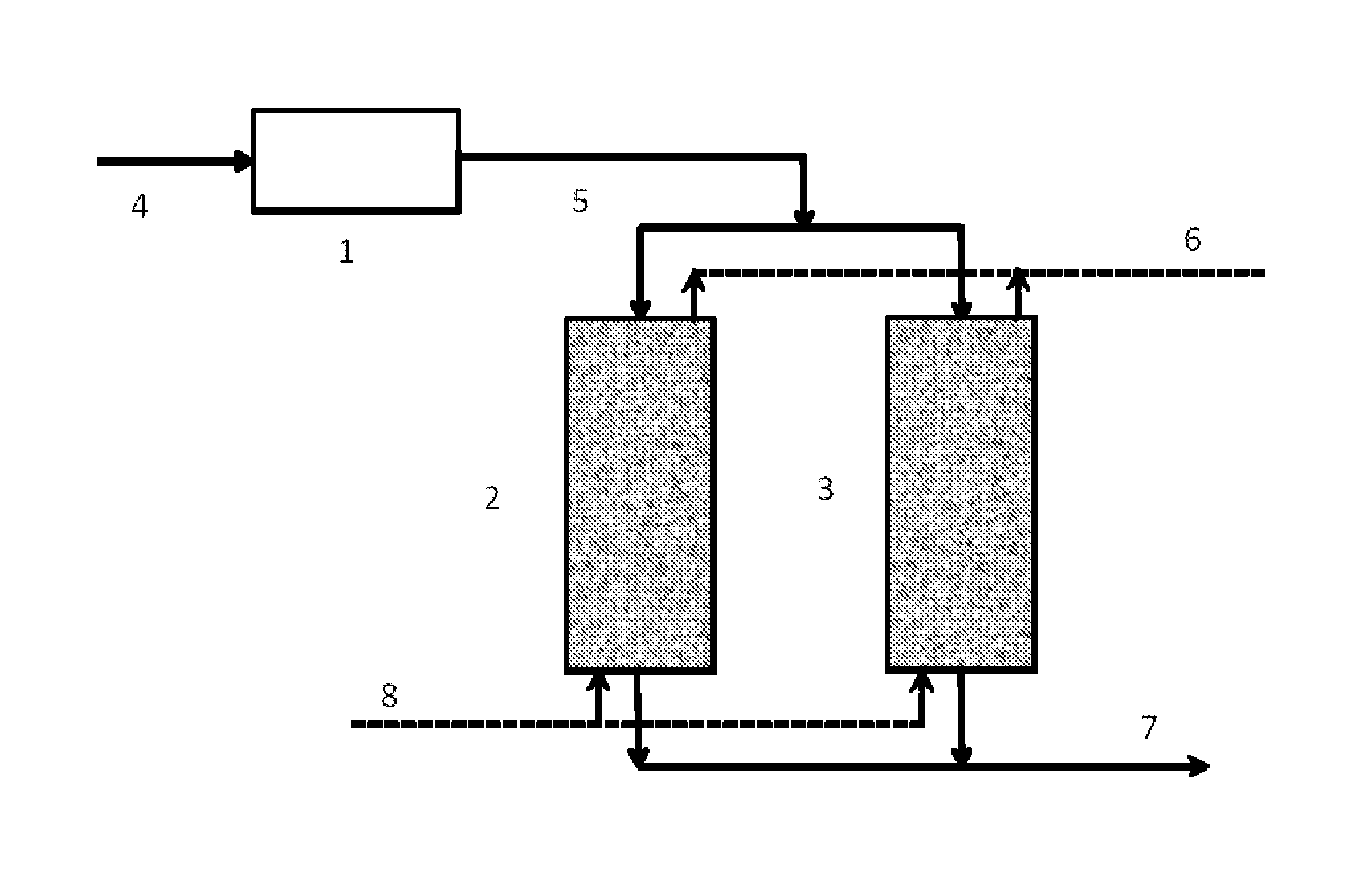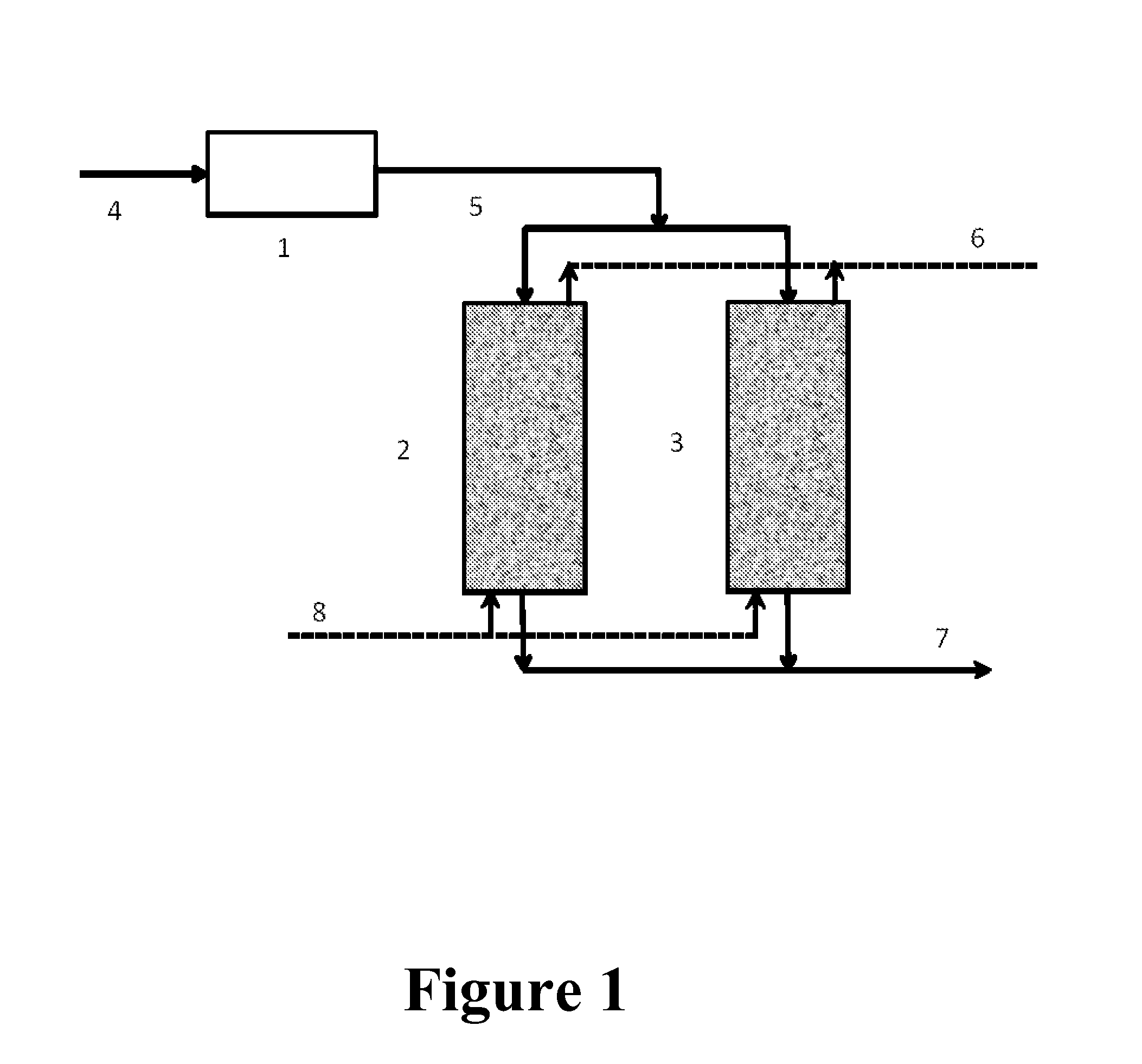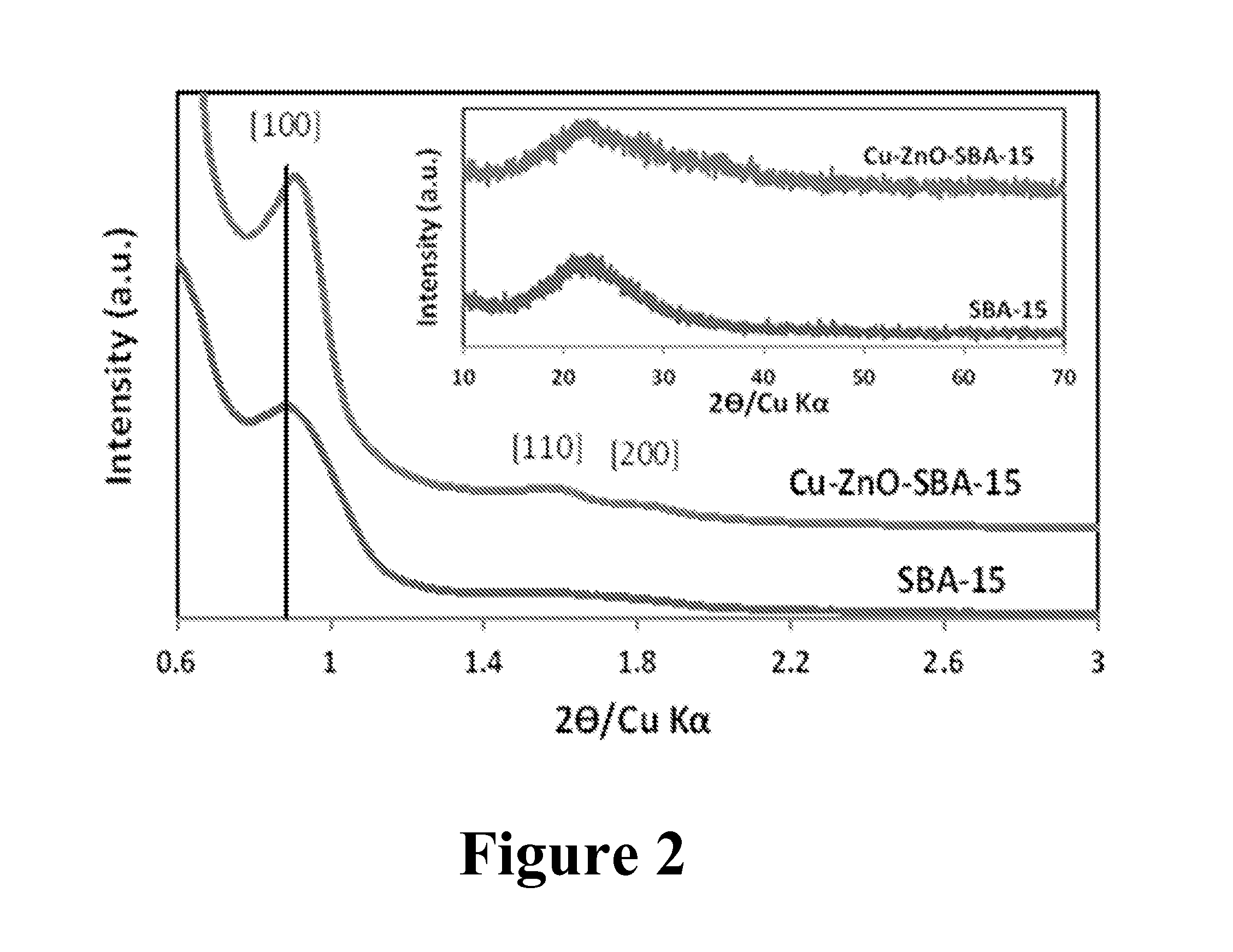Regenerable system for the removal of sulfur compounds from a gas stream
- Summary
- Abstract
- Description
- Claims
- Application Information
AI Technical Summary
Benefits of technology
Problems solved by technology
Method used
Image
Examples
example 1
Synthesis and H2S Capacity of Cu—ZnO—SBA-15 Adsorbent Material
[0066]In this example, an adsorbent material composed of copper-zinc oxides on mesoporous silica (SBA-15) (Cu—ZnO—SBA-15) was prepared. Cu—ZnO—SBA 15 was prepared by incipient wetness impregnation of aqueous solution Cu(NO3)2.3H2O and Zn(NO3)26H2O (molar ratio Cu:Zn=2:1). SBA-15 was synthesized according to the procedure developed by Sayari et al. 1.0 mL of the above solution was added to lg SBA-15 in 0.2 mL batches. After impregnation, powders were vacuum dried at room temperature for 24h and then calcined at 500° C. for 4h under a nitrogen flow of 50 mL / min.
[0067]As depicted in FIG. 2, XRD patterns of SBA-15 (calcined at 550° C. for 5h) and Cu—ZNO—ZnO—-SBA-15 (molar ratio Cu:Zn:Si=2:1:12.5) confirmed formation of mesoporous silica and its structural stability after incorporation of copper and zinc oxides. After incorporation of oxide nanoparticles, characteristic reflections shifted slightly (0.2 nm) to higher angles in...
example 2
Synthesis and H2S Capacity of Cu—ZnO-Silica Gel Adsorbent Material
[0070]Cu—ZnO-silica gel was synthesized using the same procedure described in Example 1 with 0.75 ml of copper-zinc nitrate (4 M) solution.
[0071]The Cu—ZnO-silica gel adsorbent material was tested using the adsorption / regeneration procedure detailed in Example 1. As shown in FIG. 7, the Cu—ZnO-silica gel adsorbent shows a high level of regenerability.
example 3
[0072]Synthesis and H2S Capacity of Cu—ZnO—Al2O3 Adsorbent Material
[0073]CuO / ZnO / Al2O3 precursors, zinc acetate (1.25 M), copper nitrate (1.25 M) and aluminum nitrate (1.25 M) (molar ratio Cu:Zn:Al=6:3:1), were co-precipitated by adding Na2CO3 solution (1.25 M) at a constant pH=7 in distilled water at 70° C. The resulting solution was aged for 1 h at 80° C. The precipitate was extensively washed with distilled water to afford pH=7 and was dried at 120° C. for 12 h. The powder was calcined at 550° C. for 5 h under flowing air. FIG. 8 shows the XRD pattern of Cu—ZnO—Al2O3.
[0074]Exposing the Cu—ZnO—Al2O3 adsorbent to a flow of H2S (10.3 ppmv in He) at 150° C. and 1 atm in 14 adsorption / regeneration cycles revealed a loss in adsorption capacity for the first two cycles, thereafter the capacity stabilized at a high adsorption capacity of 98 mgS / gsorbent (FIG. 9). For this adsorbent some SO2 elution was seen for a short time right before H2S breakthrough.
[0075]The invention has been desc...
PUM
| Property | Measurement | Unit |
|---|---|---|
| Temperature | aaaaa | aaaaa |
| Temperature | aaaaa | aaaaa |
| Fraction | aaaaa | aaaaa |
Abstract
Description
Claims
Application Information
 Login to View More
Login to View More - R&D
- Intellectual Property
- Life Sciences
- Materials
- Tech Scout
- Unparalleled Data Quality
- Higher Quality Content
- 60% Fewer Hallucinations
Browse by: Latest US Patents, China's latest patents, Technical Efficacy Thesaurus, Application Domain, Technology Topic, Popular Technical Reports.
© 2025 PatSnap. All rights reserved.Legal|Privacy policy|Modern Slavery Act Transparency Statement|Sitemap|About US| Contact US: help@patsnap.com



